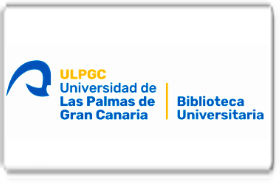Avances en el tratamiento farmacológico de Demodex spp y Otodectes Cynotis en caninos y felino
DOI:
https://doi.org/10.56048/MQR20225.8.4.2024.3525-3543Palabras clave:
Caninos; Felinos; Demodex spp; Otodectes Cynotis; Avances Farmacológicos; AcaricidasResumen
Introducción: El Demodex spp y el Otodectes Cynotis son ectoparásitos recurrentes en la clínica diaria de muchos veterinarios, además de ser indicadores de una escasa higiene, contaminación, mala nutrición o inmunosupresión, que pueden llegar a producir mucho malestar a nuestros pacientes en el ámbito dermatológico, y ser un real problema cuando no se realiza la aplicación adecuados de fármacos y protocolos a seguir. Objetivo: Analizar los últimos avances obtenidos respecto al tratamiento farmacológico contra estos ectoparásitos, que afectan tanto a caninos como a felinos. Metodología: Revisión de tipo bibliográfica que recopilara mediante un análisis exhaustivo 33 artículos de alto nivel de fuentes como Scielo, ProQuest, Scopus. Resultados: Se determinó que el fármaco más eficaz para tratar Demodex spp. y Otodectes cynotis es el Fluralaner, con una efectividad del 100%. Otras isoxazolinas, como Afoxolaner, Sarolaner y Lotilaner, también son efectivas, pero requieren tres dosis mensuales para Demodex spp. y dos para Otodectes cynotis. Fluralaner se destaca por su duración de 12 semanas. En cuanto a los costos de los tratamientos acaricidas, no se observaron diferencias significativas, ya que la mayoría de las marcas ofrecen precios similares. Conclusión: Las isoxazolinas son el tratamiento actual más empleado por su seguridad, eficacia y durabilidad en el tratamiento de ácaros del tipo Demodex spp y Otodectes cynotis, su uso debe ser orientado previo un análisis del paciente y de las consideraciones que tome el médico veterinario al momento del tratamiento.
Descargas
Métricas
Cited
DOI: 10.56048![]()
Citas
Arroyo, M., Yasmir, J., y Hincapié, L. C. (enero - junio de 2018). Demodicosis generalizada canina tratada con Fluralaner: reporte de un caso. Revista Veterinaria y Zootecnia: DOI: 10.17151/vetzo.2018.12.1.5
Azaria, H., y Defalque, V. (November de 2023). Isoxazolines for treating canine and feline otodectic mange; feline demodicosis, lynxacariasis, lice infestation, and notoedric mange (scabies); demodicosis in hamsters; and sarcoptic and psoroptic manges in rabbits. Can Vet J.: PMID: 37915780; PMCID: PMC10581354.
Becskei, C., Cuppens, O., y P. Mahabir, S. (2018). Efficacy and safety of sarolaner against generalized demodicosis in dogs in European countries: a non-inferiority study. Veterinary Dermatology : DOI: 10.1111/vde.12526
Beugnet, F. (02 de April de 2021). NexGard® Combo (esafoxolaner, eprinomectin, praziquantel), a new endectoparasiticide spot-on formulation for cats. Parasite: doi: 10.1051/parasite/2021013
Beugnet, F., Halos, L., Larsen, D., y Vos, C. d. (March de 2016). Efficacy of oral afoxolaner for the treatment of canine generalised demodicosis. www.parasite-journal.org: DOI: 10.1051/parasite/2016014
Blazejak, K., Cvejić, D., Hellmann, K., Ringeisen, H., Hamburg, H., Petry, G., . . . Mencke, N. (January de 2023). Field efficacy and safety of Felpreva® (tigolaner, emodepside and praziquantel) spot-on for the treatment of natural ear mite infestations (Otodectes cynotis) and notoedric mange (Notoedres cati) in cats. Elsevier: DOI: 10.1016/j.crpvbd.2023.100146
Blazejak, K., Viljoen, A., Zwiegers, R., Klopper, R., Ringeisen, H., Petry, G., . . . Mencke, N. (January de 2023). Efficacy of Felpreva®, a new spot-on formulation containing tigolaner, emodepside and praziquantel, applied as a single application to cats artificially infested with ear mites (Otodectes cynotis). Elsevier: DOI: 10.1016/j.crpvbd.2023.100131
Brame, B., y Cain, C. (2021). ChroniC otitis in Cats Clinical management of primary, predisposing and perpetuating factors. Journal of Feline Medicine and Surgery: DOI: 10.1177/1098612X211007072
Carithers, D., Crawford, J., de Vos, C., Lotriet, A., y Fourie, J. (09 de December de 2016). Assessment of afoxolaner efficacy against Otodectes cynotis infestations of dogs. Parasites y Vectors: DOI: 10.1186/s13071-016-1924-4
Castro, L., y Saldivia, M. (24 de 11 de 2020). Compared Efficacy of Three Anti-Mite Drugs Used to Treat Otoacariasis Caused by Otodectes cynotis in Domestic Cats in Puerto Montt, Los Lagos Region, Chile. Revista de Medicina Veterinaria: https://doi.org/10.19052/mv.vol1.iss41.9
Cen-Cen, C. J., Bolio-González, M. E., y Rodríguez-Vivas, R. I. (06 de 07 de 2018). Main immunological hypotheses of the canine demodicosis. Ciencia y Agricultura: https://doi.org/10.19053/01228420.v15.n2.2018.8396
Defalque, V. E. ( NOVEMBER de 2022). Isoxazolines for treating canine demodicosis, sarcoptic mange (scabies), and lice infestation. Can Vet J.: PMID: 36325416; PMCID: PMC9558591.
Djuric, M., Milcic Matic, N., Davitkov, D., Glavinic, U., Davitkov, D., Vejnovic, B., y Stanimirovic, Z. (28 de May de 2019). Efficacy of oral fluralaner for the treatment of canine generalized demodicosis: a molecular-level confirmation. Parasites & Vectors: https://doi.org/10.1186/s13071-019-3521-9
Fourie, J. J., Liebenberg, J. E., Horak, I. G., Taenzler, J., Heckeroth, A. R., y Frénais, R. (28 de March de 2015). Efficacy of orally administered fluralaner (BravectoTM) or topically applied imidacloprid/moxidectin (Advocate®) against generalized demodicosis in dogs. Parasites & Vectors: DOI 10.1186/s13071-015-0775-8
Fourie, J. J., Meyer, L., y Thomas, E. (25 de January de 2019). Efficacy of topically administered fluralaner or imidacloprid/moxidectin on dogs with generalised demodicosis. Parasites & Vectors: https://doi.org/10.1186/s13071-018-3230-9
H. Six, R., Csilla, B., Mazaleski, M. M., J. Fourie, J., Mahabir, S. P., R. Myers, M., y Slootmans, N. (February de 2016). Efficacy of Sarolaner, a novel oral isoxazoline, against two common mite infestations in dogs: Demodex spp. and Otodectes cynotis. Elsevier : https://doi.org/10.1016/j.vetpar.2016.02.027
Hiblu, M. A., Ellraiss, O. M., Karim, E. S., Elmishri, R. A., Duro, E. M., Altaeb, A. A., y Bennour, E. M. (30 de October de 2021). Otodectic and bacterial etiology of feline otitis externa in Tripoli, Libya. Open Vet J: DOI: 10.4314/ovj.v10i4.4
Lavan, R., Normile, D., Husain, I., Singh, A., Armstrong, R., y Heaney, K. (21 de January de 2022). An assessment of canine ectoparasiticide administration compliance in the USA. Parasites & Vectors: https://doi.org/10.1186/s13071-021-05134-1
Lebon, W., Beccati, M., Bourdeau, P., Brement, T., Bruet, V., Cekiera, A., . . . Beuget, F. H. (10 de September de 2018). Efficacy of two formulations of afoxolaner (NexGard® and NexGard Spectra®) for the treatment of generalised demodicosis in dogs, in veterinary dermatology referral centers in Europe. Parasites & Vectors: https://doi.org/10.1186/s13071-018-3083-2
Medleau, L., Ristic, Z., y Mcelveen, D. R. (December de 1996). Daily ivermectin for treatment of generalized demodicosis in dogs. Veterinary Dermatology: https://doi.org/10.1111/j.1365-3164.1996.tb00248.x
Medleau, L., y Willemse, T. (January de 1995). Efficacy of daily amitraz on generalised demodicosis in dogs. Journal of Small Animal Practice: https://doi.org/10.1111/j.1748-5827.1995.tb02750.x
Morita, T., Momota, Y., Mori, A., Oda, H., IKE, K., y Sako, T. (February de 2018). Successful treatment of refractory demodicosis and transient papules with a single dose of fluralaner in a dog with uncontrolled severe endocrine disease. The Journal of Veterinary Medical Science: doi: 10.1292/jvms.17-0274
Palmieri, V., Dodds, W. J., Morgan, J., Carney, E., Fritsche, H. A., Jeffrey, J., . . . Kimball, J. P. (02 de June de 2020). Survey of canine use and safety of isoxazoline parasiticides. WILEY : https://doi.org/10.1002/vms3.285
Petersen, I., Chiummo, R., Zschiesche, E., Karas-Tecza, J., Rapti, D., y Roepke, R. &. (11 de June de 2020). A European field assessment of the efficacy of fluralaner (Bravecto®) chewable and spot-on formulations for treatment of dogs with generalized demodicosis. Parasites & Vectors: https://doi.org/10.1186/s13071-020-04159-2
Ribeiro Campos, D., Oliveira Chaves, J. K., Guimarães, B. G., Yin Nak, S., Pereira Salça de Almeida, G., Gijsen, I. S., . . . Barbour Scott, F. (15 de March de 2021). Efficacy of Oral Sarolaner for the Treatment of Feline Otodectic Mange. Pathogens : https://doi.org/10.3390/pathogens10030341
Settimi, D. R. (2018). Posible caso de Demodex injai en un caniche mediano en San Miguel de Tucumán. Facultad de Ciencias Agropecuarias Especialización en Clínica de Pequeños Animales: https://pa.bibdigital.ucc.edu.ar/1695/1/TF_Settimi.pdf
Snyder, D. E., Wiseman, S., y Liebenberg, J. E. (01 de November de 2017). Efficacy of lotilaner (Credelio™), a novel oral isoxazoline against naturally occurring mange mite infestations in dogs caused by Demodex spp. Parasites & Vectors: https://doi.org/10.1186/s13071-017-2472-2
Thomson, P., Carreño, N., y Núñez, A. (2023). Main mites associated with dermatopathies present in dogs and other members of the Canidae family. Open Veterinary Journal: https://doi.org/10.5455/OVJ.2023.v13.i2.1
Tielemans, E., Prullage, J., Tomoko, O., Liebenberg, J., Capári, B., Sotiraki, S., . . . Knaus, M. (02 de April de 2021). Efficacy of a novel topical combination of esafoxolaner, eprinomectin and praziquantel against ear mite (Otodectes cynotis) infestations in cats. Parasite : https://doi.org/10.1051/parasite/2021022
Tishyn, O. L., Yuskiv, I. D., y Yuskiv, L. L. (2023). Comparative effectiveness of the complex drugs based on imidacloprid and moxidectin against ecto- and endoparasitic infestations of cats . Regulatory Mechanisms in Biosystems: DOI:10.15421/022330
Ycaza Haro, M. D., Manzo Fernández, C. G., y Sylva Morán, L. M. (Mayo de 2019). Prevalence of Otodectes cynotis in Canis lupus familiaris that present otitis externa, in two veterinary clinics located in the cantons of Daule and Samborondón. Espirales revista multidisciplinaria de investigación científica: https://doi.org/10.31876/er.v3i28.632
Zhou, X., Hohman, A., y Hsu, W. H. (15 de Jun de 2020). Review of extralabel use of isoxazolines for treatment of demodicosis in dogs and cats. Journal of the American Veterinary Medical Association: https://doi.org/10.2460/javma.256.12.1342
Zineldar, H. A., Abouzeid, N. Z., Eisa, M. I., Bennour, E. M., y El Neshwy, W. M. (31 de December de 2023). Prevalence, clinical presentation, and therapeutic outcome of ectoparasitic infestations in dogs in Egypt. Open Veterinary Journal: DOI: 10.5455/OVJ.2023.v13.i12.13
Publicado
Cómo citar
Número
Sección
Categorías
Licencia

Esta obra está bajo una licencia internacional Creative Commons Atribución 4.0.
Los autores se comprometen a respetar la información académica de otros autores, y a ceder los derechos de autor a la Revista MQRInvestigar, para que el artículo pueda ser editado, publicado y distribuido. El contenido de los artículos científicos y de las publicaciones que aparecen en la revista es responsabilidad exclusiva de sus autores. La distribución de los artículos publicados se realiza bajo una licencia 
































































































